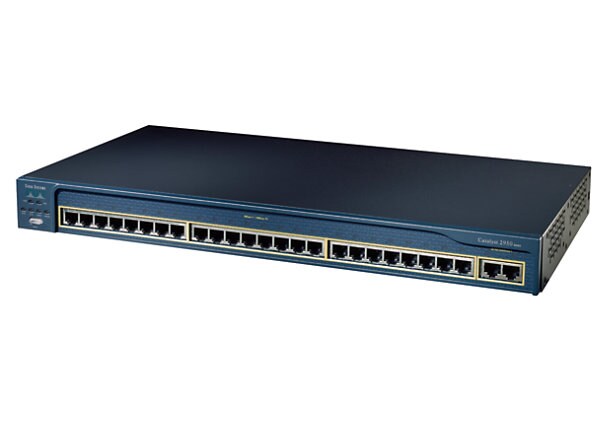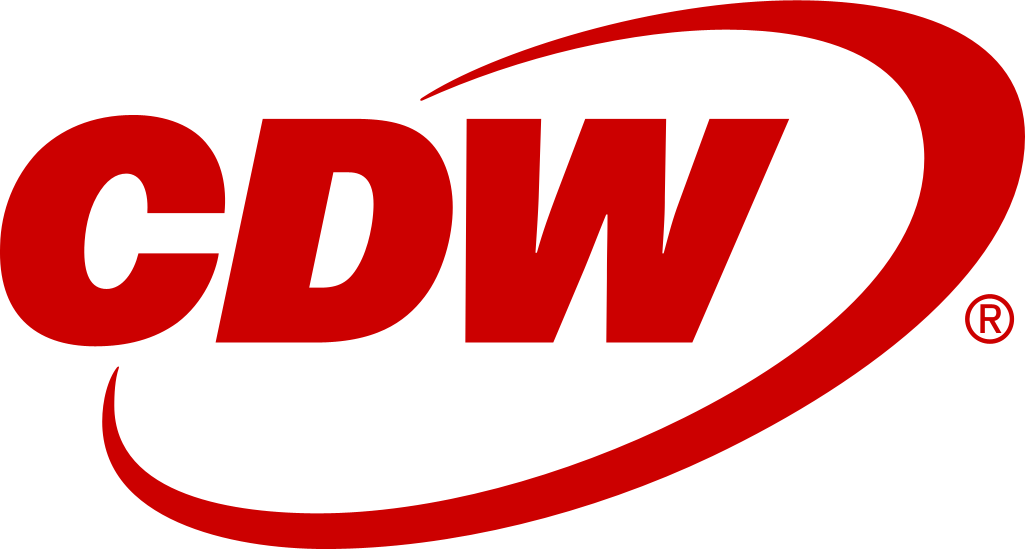
Quick tech specs
- 24-port 10/100BASE-TX Fast Ethernet managed rackmountable switch with 2 10/100/1000BASE-T ports and data security protection
Know your gear
The Cisco Catalyst 2950 is a wire-speed Fast Ethernet switch that delivers premium performance and functionality for local-area networks (LANs)
This standalone, 10/100BASE-TX autosensing switch provides enhanced quality of service (QoS) and multicast management features managed with the easy-to-use, Web-based Cisco Cluster Management Suite (CMS) and integrated Cisco IOS® Software.
With a switching fabric of 8.8Gigabits per second (Gbps) and a maximum forwarding bandwidth of 4.4Gbps, the Catalyst 2950 switch delivers wire-speed performance on all ports in connecting end-stations and users to the company LAN.
Catalyst 2950 switch supports performance boosting features such as Fast EtherChannel® and Gigabit EtherChannel technology, offering up to 4Gbps of high-performance bandwidth between Catalyst switches, routers, and servers.
The Catalyst 2950 delivers sophisticated LAN-edge QoS, unmatched in its category of products in the industry. The Catalyst 2950 switch supports two modes of reclassification. One mode based on the IEEE 802.1p standard honors the class-of-service (CoS) value at the ingress point and assigns the packet to the appropriate queue. In the second mode, packets can be reclassified based on a default CoS value assigned to the ingress port by the network administrator. In the case of frames that arrive without a CoS value (such as untagged frames), The Catalyst 2950 supports classification based on a default CoS value per port assigned by the network administrator.
Once the frames have been classified or reclassified using one of the above modes, they are assigned to the appropriate queue at the egress.The Catalyst 2950 switch supports four egress queues, which allow the network administrator to be more discriminating and granular in assigning priorities for the various applications on the LAN traffic. Strict Priority Scheduling configuration ensures time-sensitive applications such as voice, always follow an expedited path through the switch fabric. Weighted Round Robin (WRR) scheduling, another significant enhancement, ensures that lower-priority traffic receives attention without comprising the priority settings administered by a network manager.
These features allow network administrators to prioritize mission-critical, time-sensitive traffic, such as ERP (Oracle, SAP, and so on), voice (IP telephony traffic), and CAD/CAM over less time-sensitive applications such as FTP or e-mail (SMTP).
The Internet Group Management Protocol (IGMP) Snooping feature allows the switch to "listen in" on the IGMP conversation between hosts and routers. When a switch hears an IGMP join request from a host for a given multicast group, the switch adds the host's port number to the Group Destination Address (GDA) list for that group. And, when the switch hears an IGMP leave request, it removes the host's port from the Content Addressable Memory (CAM) table entry.
By supporting IGMP Snooping in hardware and configuration of IGMP Snooping via the Cisco Cluster Management Suite,The Catalyst 2950 switch delivers outstanding performance and ease of use in administering and managing multicast applications on the LAN.
The Cisco Cluster Management Suite (CMS) is Web-based software that is embedded in Catalyst 2950 switch. Through Cisco Switch Clustering technology, users access CMS with any standard Web browser to manage up to 16 interconnected Catalyst switch at once regardless of their geographic proximity using a single-IP address. CMS provides an integrated management interface for all Cisco IOS functionality, firmware management, and offers administrators a powerful graphical user interface (GUI) tool to easily monitor and manage their LANs.
With a switching fabric of 8.8Gigabits per second (Gbps) and a maximum forwarding bandwidth of 4.4Gbps, the Catalyst 2950 switch delivers wire-speed performance on all ports in connecting end-stations and users to the company LAN.
Catalyst 2950 switch supports performance boosting features such as Fast EtherChannel® and Gigabit EtherChannel technology, offering up to 4Gbps of high-performance bandwidth between Catalyst switches, routers, and servers.
The Catalyst 2950 delivers sophisticated LAN-edge QoS, unmatched in its category of products in the industry. The Catalyst 2950 switch supports two modes of reclassification. One mode based on the IEEE 802.1p standard honors the class-of-service (CoS) value at the ingress point and assigns the packet to the appropriate queue. In the second mode, packets can be reclassified based on a default CoS value assigned to the ingress port by the network administrator. In the case of frames that arrive without a CoS value (such as untagged frames), The Catalyst 2950 supports classification based on a default CoS value per port assigned by the network administrator.
Once the frames have been classified or reclassified using one of the above modes, they are assigned to the appropriate queue at the egress.The Catalyst 2950 switch supports four egress queues, which allow the network administrator to be more discriminating and granular in assigning priorities for the various applications on the LAN traffic. Strict Priority Scheduling configuration ensures time-sensitive applications such as voice, always follow an expedited path through the switch fabric. Weighted Round Robin (WRR) scheduling, another significant enhancement, ensures that lower-priority traffic receives attention without comprising the priority settings administered by a network manager.
These features allow network administrators to prioritize mission-critical, time-sensitive traffic, such as ERP (Oracle, SAP, and so on), voice (IP telephony traffic), and CAD/CAM over less time-sensitive applications such as FTP or e-mail (SMTP).
The Internet Group Management Protocol (IGMP) Snooping feature allows the switch to "listen in" on the IGMP conversation between hosts and routers. When a switch hears an IGMP join request from a host for a given multicast group, the switch adds the host's port number to the Group Destination Address (GDA) list for that group. And, when the switch hears an IGMP leave request, it removes the host's port from the Content Addressable Memory (CAM) table entry.
By supporting IGMP Snooping in hardware and configuration of IGMP Snooping via the Cisco Cluster Management Suite,The Catalyst 2950 switch delivers outstanding performance and ease of use in administering and managing multicast applications on the LAN.
The Cisco Cluster Management Suite (CMS) is Web-based software that is embedded in Catalyst 2950 switch. Through Cisco Switch Clustering technology, users access CMS with any standard Web browser to manage up to 16 interconnected Catalyst switch at once regardless of their geographic proximity using a single-IP address. CMS provides an integrated management interface for all Cisco IOS functionality, firmware management, and offers administrators a powerful graphical user interface (GUI) tool to easily monitor and manage their LANs.


